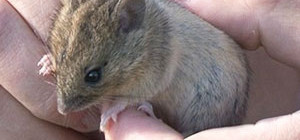 Caucasian Spruce, scientifically known as Picea orientalis, is a remarkable evergreen tree that captures the imagination with its impressive growth rate and stately appearance. With its ability to thrive in a wide range of climates and soil conditions, this species has become a favorite among gardeners and landscapers alike. In this blog post, we will delve into the growth characteristics and cultivation requirements of the Caucasian Spruce, exploring its potential to transform landscapes from zones 4 to 9 with its vibrant presence.
Caucasian Spruce, scientifically known as Picea orientalis, is a remarkable evergreen tree that captures the imagination with its impressive growth rate and stately appearance. With its ability to thrive in a wide range of climates and soil conditions, this species has become a favorite among gardeners and landscapers alike. In this blog post, we will delve into the growth characteristics and cultivation requirements of the Caucasian Spruce, exploring its potential to transform landscapes from zones 4 to 9 with its vibrant presence.
Growth Rate and Dimensions
One of the most striking aspects of the Caucasian Spruce is its rapid growth rate. This evergreen tree can grow an impressive 6 to 12 inches per year during its early stages. Within a decade, it typically reaches a height of 5 to 10 feet, while its width spans 2 to 3 feet. As the tree matures, it continues to astonish, eventually attaining majestic heights of 50 to 60 feet with a width of 15 to 20 feet. This robust growth makes the Caucasian Spruce an ideal choice for those seeking a fast-growing evergreen that provides privacy, shade, and aesthetic appeal.
Cultivation Requirements
USDA Zones and Sun Exposure:
Caucasian Spruce thrives in USDA hardiness zones 4 to 9, demonstrating its adaptability to a wide range of climates. Whether your garden experiences cold winters or warm summers, this tree can withstand the conditions. Additionally, it flourishes in full sun, requiring at least six hours of direct sunlight per day to maintain its health and vigor. Adequate exposure to sunlight ensures proper photosynthesis, leading to optimal growth and foliage density.
Soil Conditions and Drainage:
One of the remarkable features of the Caucasian Spruce is its adaptability to various soil types. While it prefers well-draining soil, it can tolerate a range of soil textures, including clay, loam, and sandy soils. However, it is crucial to ensure that the soil provides efficient drainage, as excessive moisture retention can lead to root rot and other detrimental issues. Prioritize soil amendments or choose planting sites with good drainage to promote healthy root development.
Planting and Care Tips
Planting Guidelines:
When planting Picea orientalis, it is essential to dig a hole that is as deep as the root ball and two to three times as wide. This encourages proper root spread and establishment. Gently loosen the roots before placing the tree in the hole, ensuring that the base of the trunk is level with or slightly above the surrounding soil. Backfill the hole with a mixture of soil and organic matter, gently firming it around the roots to eliminate air pockets.
Watering and Mulching:
During the establishment period, provide regular watering to ensure the tree receives sufficient moisture. However, be cautious not to overwater, as excessive moisture can lead to root issues. Once established, the Caucasian Spruce exhibits good drought tolerance, requiring supplemental watering only during extended periods of dryness. Apply a layer of organic mulch around the base of the tree, maintaining a distance from the trunk, to conserve soil moisture and suppress weed growth.
Pruning and Maintenance:
Pruning requirements for the Caucasian Spruce are minimal, primarily focused on the removal of dead, damaged, or diseased branches. Additionally, light pruning can be conducted to shape the tree or manage its size if necessary. Regular monitoring for pest and disease issues is advised, although this species is generally resistant to common ailments. Providing a balanced fertilizer in early spring can help promote healthy growth and vibrant foliage.
Benefits and Uses
The Caucasian Spruce offers numerous benefits and uses that make it a valuable addition to any landscape:
Aesthetics:
With its dense foliage and elegant conical shape, the Caucasian Spruce adds a touch of grandeur and sophistication to any garden or property. Its vibrant green needles provide year-round visual appeal, creating a captivating focal point.
Privacy and Windbreak:
Thanks to its rapid growth rate and tall stature, the Caucasian Spruce is an excellent choice for creating privacy screens and windbreaks. Planted in rows or clusters, it forms a dense barrier that shields your property from prying eyes and reduces the impact of strong winds.
Habitat and Wildlife Support:
The thick foliage of the Caucasian Spruce offers a safe haven for birds and small mammals, providing nesting sites and protection from predators. By incorporating this evergreen into your landscape, you contribute to biodiversity and promote a healthy ecosystem.
Ornamental Specimen:
The majestic presence of the Caucasian Spruce makes it an ideal choice for showcasing as a standalone specimen tree. Whether in a large estate garden or a small urban backyard, its imposing stature and graceful form create a stunning visual impact.
Erosion Control:
The extensive root system of the Caucasian Spruce helps stabilize soil and prevent erosion on slopes or areas prone to soil movement. By planting these trees strategically, you can protect vulnerable areas of your property from erosion and soil degradation.
Conclusion
The Caucasian Spruce, with its impressive growth rate, adaptable nature, and stunning appearance, is a versatile evergreen that brings numerous benefits to landscapes in USDA zones 4 to 9. Whether you desire privacy, wind protection, or an ornamental centerpiece, this tree fulfills various roles with elegance and resilience. By understanding its growth characteristics and providing proper care, you can cultivate a thriving Caucasian Spruce that will enhance your outdoor space for years to come. So, consider adding the majestic Caucasian Spruce to your landscape and enjoy the beauty and functionality it brings.








